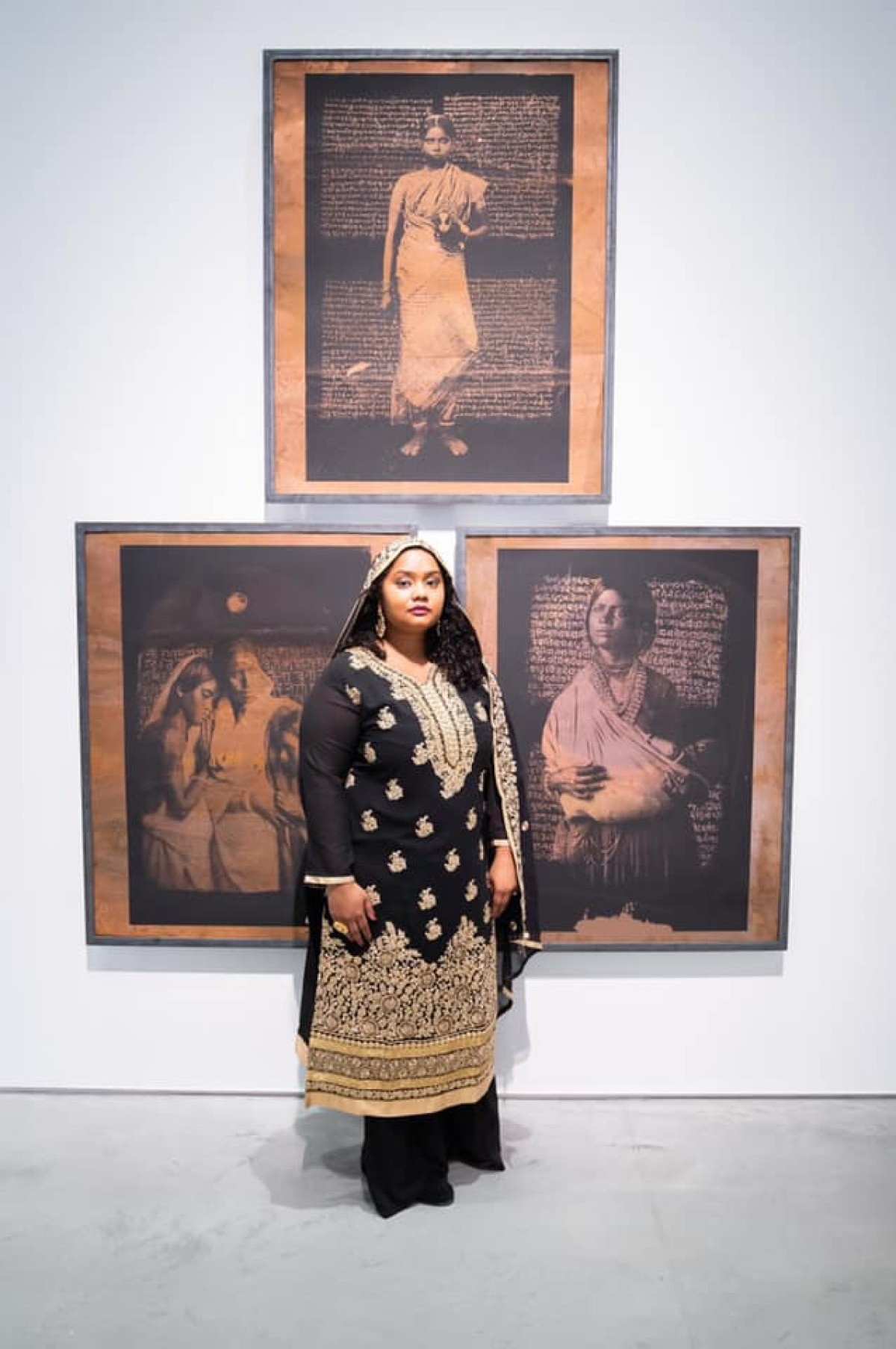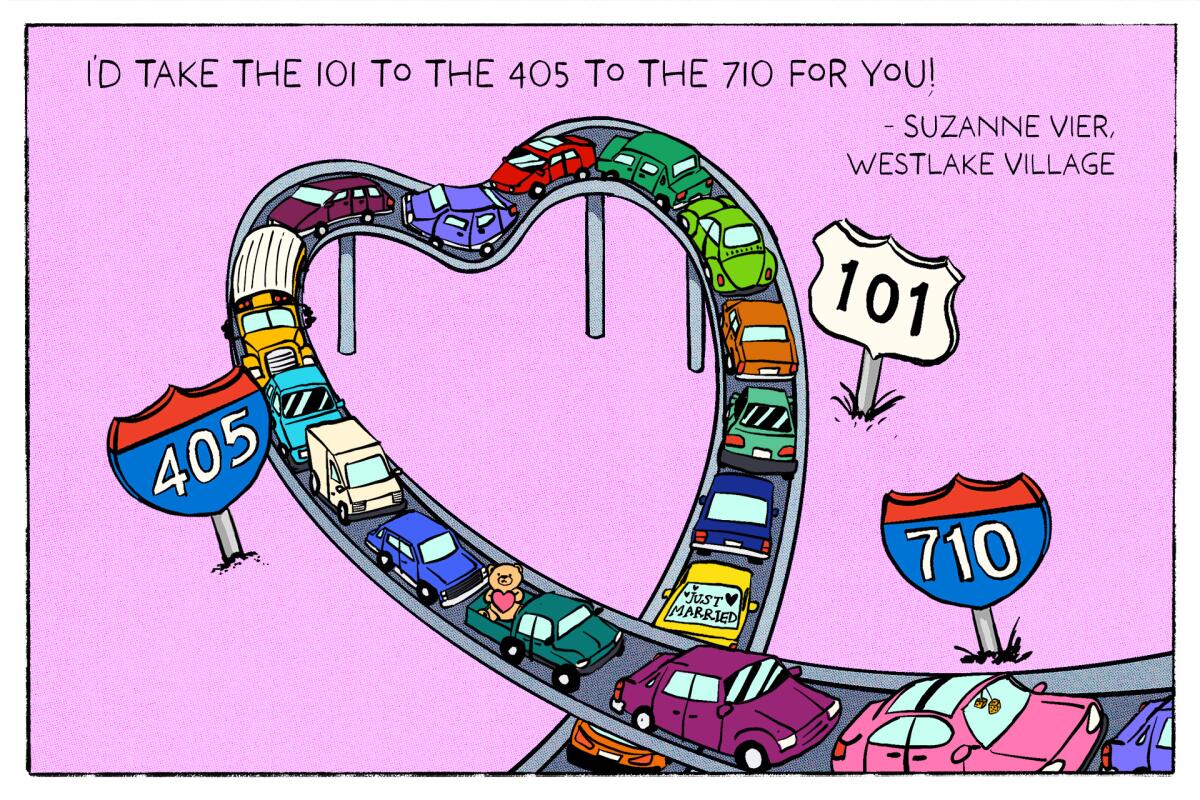An activist artist explores caste discrimination and how to fight it

- Share via
Good morning, and welcome to the Essential California newsletter. It’s Tuesday, Feb. 14. I’m Suhauna Hussain, a reporter on the L.A. Times business desk. I write about issues affecting workers.
I have a heavy topic to cover today: Dalit caste discrimination.
Formerly known as untouchables, Dalits fall at the bottom of a centuries-old South Asian social hierarchy.
In the course of my reporting, I’ve been thinking about workplace discrimination and labor trafficking schemes in the U.S. that involve issues of caste. They can be uniquely fraught, damaging for those targeted and difficult to expose.
A prominent U.S. case involved a now-notorious Berkeley landlord who was the organizer and leader of an illegal sex, labor and human trafficking ring. The scheme was revealed only after a young Indian woman died, and local student journalists began to ask questions.
More cases are coming to light. A major 2020 lawsuit against Cisco Systems, for example, alleged caste-based discrimination against a Dalit engineer by two dominant-caste managers. A Seattle city councilmember announced a proposal last month to add caste to the city’s anti-discrimination policy.
I wanted to explore this issue more, so I spoke with Thenmozhi Soundararajan, a Dalit rights activists and the executive director of Equality Labs, a South Asian civil rights organization, about her book, published in November.
Soundararajan has spent years fighting caste-based discrimination. Her book comes as violence toward Muslims and low-caste people in India is on the rise, emboldened by the leadership of Narendra Modi, who became prime minister of India in 2014, and his right-wing Bharatiya Janata Party.
The bigotry can replicate itself in the U.S. South Asian community, and affects the lives of over a quarter of a billion people worldwide.
Attendees of an Indian Independence Day celebration in Anaheim in August charged at a small group of protesters carrying signs that read “Abolish caste” and “Protect India’s Muslim lives.” A similar celebration in New Jersey featured a bulldozer — a strong symbol, given that Indian officials have used bulldozers to demolish the homes of Muslim and Dalit activists — in its parade. In November, a truck with a digital billboard showing anti-Muslim messaging targeted four New Jersey mosques.
In “The Trauma of Caste,” Soundararajan explains the continuing violence of the caste system and her own experience of it growing up in California. And she seeks to chart a path forward, particularly for diasporic South Asians in the U.S.
Before we dive in, I want to ask that if you or someone you know has experienced caste discrimination in California — big or small — please don’t hesitate to write to me at [email protected]. Even if you’re not sure you want to air your experience publicly, I want to hear from you.
Questions and answers have been edited for length and clarity.
How did you experience caste oppression growing up as Dalit?
There’s so much shame, because you’re told that you are spiritually defiling before God. And that’s a very profound edge to discrimination because it’s not just that you’re excluded from institutions and that you face violence, but your very divinity is questioned.
I speak out because I saw how much hiding who they were diminished my parents. I saw how much pain it really gave them. And I know that they had sacrificed a lot for me to be here and I wanted to live my life in a way that was authentic in a way that they couldn’t live theirs. If we Dalits stay in the closet, dominant caste-people can pretend that they’ve created a caste-less environment [in the U.S.] — which they haven’t.
It feels like right-wing Hindu nationalists in the U.S. have become bolder in some expressions of bigotry over the past year or so. What do you think is behind this shift?
We’re in a moment right now where many dominant-caste people are in networks of bigotry — filtered bubbles — that allow them to justify more and more extreme behavior. And that can range from outright usage of caste slurs, to gaslighting whether or not caste exists.
I’ve had the police called on me. I’ve been shoved. I faced rape and death threats. When you talk to [Brahmin supremacists] you can see they’re not even operating from a place of fact, their nervous systems are so triggered to view equity as a survival-level threat. But there is nothing inherently threatening about asking for our equal rights towards the law. It’s not unlike the people who throw temper tantrums when we’re teaching the history of slavery.
Last year you were scheduled to give a talk to Google News employees for Dalit History Month. But that talk was canceled after some Google employees reportedly spread disinformation, calling you “Hindu-phobic” and “anti-Hindu” in emails. How do you grapple with that?
I was speaking about the issue of caste equity and there were bigots that shared that they were afraid for their lives if I were to speak about caste equity. Think about how absurd that is. Right? No one has ever died from a DEI talk being given, as far as I can tell. Their nervous systems went to that place of anxiety, because they are so unable to share space with a Dalit person. Think about how big that divide is in our community, that that’s where we’re at.
So for me, speaking my truth about not only being cast-oppressed, but also creating an urgency for us to heal this division across our community is really the need of the hour.
In the book, you talked about taking a trauma-informed approach to tackling caste-oppression. What are some specific steps people can take?
There’s really specific steps for South Asians. And then there’s really specific steps for allies.
I think for allies, we really want people to understand that this is a world that is really active. And there’s a reckoning going on, for the South Asian community’s relations to caste and religious oppression. The best way to be supportive is to learn about it. Be part of caste equity movements. Consider thinking about ways that you can be an ally in your own workspace, like pushing to add caste as a protected category, inviting relevant speakers to build awareness.
For South Asians, I think that we have a long journey of reckoning, as the threat of mass atrocity looms in our homeland. Every person that reads this book I hope has more tools to understand their own past lineage— what benefits or privileges and also what deprivation and trauma they may have endured.
For the caste-privileged, there’s a lot of work to be done to build resilience related to examining your background and challenging bigotry in interpersonal relationships. It can be unpleasant to find out, “oh, I was complicit with violence” or, “oh, I was actually part of a caste that exploited labor or land.” The discomfort is such a crucial place of learning.
For caste-oppressed people, there’s really this invitation to take time to acknowledge the grief and the pain, everything that has denied us or dehumanized us, and for us to use that and open up possibilities for care and healing.
And now, here’s what’s happening across California:
Note: Some of the sites we link to may limit the number of stories you can access without subscribing.
HEALTH AND SAFETY
California reached another coronavirus milestone. The total number of cases reported in the state topped 12 million as of last week. A particularly infectious strain called XBB.1.5 is circulating, though health officials say it hasn’t created unmanageable strain on the healthcare system. Los Angeles Times
Being released from prison for many translates to a life of homelessness and overdose. A new California policy could help. In January, California became the first state permitted to provide Medicaid to people behind bars who are set to be discharged, including those with mental illnesses and substance use disorders. Los Angeles Times
A United Airlines flight departing Hawaii for California in December nearly plunged into the Pacific Ocean, according to flight data. The plane went from 2,200 feet to 775 feet above the water in less than 20 seconds. Los Angeles Times
Check out "The Times" podcast for essential news and more
These days, waking up to current events can be, well, daunting. If you’re seeking a more balanced news diet, “The Times” podcast is for you. Gustavo Arellano, along with a diverse set of reporters from the award-winning L.A. Times newsroom, delivers the most interesting stories from the Los Angeles Times every Monday, Wednesday and Friday. Listen and subscribe wherever you get your podcasts.
POLITICS AND GOVERNMENT
Watchdog groups are keeping an eye on the L.A. mayor’s chief of staff. Months before he became chief of staff to Mayor Karen Bass, Chris Thompson was a lobbyist for the committee charged with fundraising for the 2028 Olympics. Thompson says he will stay away from the Olympics-related discussions the first year of her administration — but that hasn’t reassured watchdog organizations who point out city and state taxpayers are on the hook for cost overruns. Los Angeles Times
We keep hearing about mysterious unidentified flying objects. What questions do they raise for the U.S. national security apparatus? Los Angeles Times
Support our journalism
CALIFORNIA CULTURE
The university as landlord: an essay by Hannah Appel, associate director of the UCLA Luskin Institute on Inequality and Democracy, describes the historic strike by academic workers at the University of California in its financial context. She describes the system’s role as one of the biggest employers, landlords and financial actors in the state. The New York Review
What you shouldn’t buy. Times reporter Brian Contreras writes about how worsening economic conditions are a stress test for the burgeoning influencer economy — a challenge some online creators have found ways to overcome. Los Angeles Times
Free online games
Get our free daily crossword puzzle, sudoku, word search and arcade games in our new game center at latimes.com/games.
AND FINALLY
You’ve been sending us your romantic California-themed Valentine’s prose — aka Calentines — and our design team gussied up the sappiest, wittiest submissions. Here’s the final installment:


Tomorrow, we’ll return to sharing California’s essential landmarks. Got one for us? Fill out this form to send us your photos of a special spot in California — natural or human-made. Tell us why it’s interesting and what makes it a symbol of life in the Golden State. Please be sure to include only photos taken directly by you. Your submission could be featured in a future edition of the newsletter.
Please let us know what we can do to make this newsletter more useful to you. Send comments to [email protected].
Sign up for Essential California
The most important California stories and recommendations in your inbox every morning.
You may occasionally receive promotional content from the Los Angeles Times.




